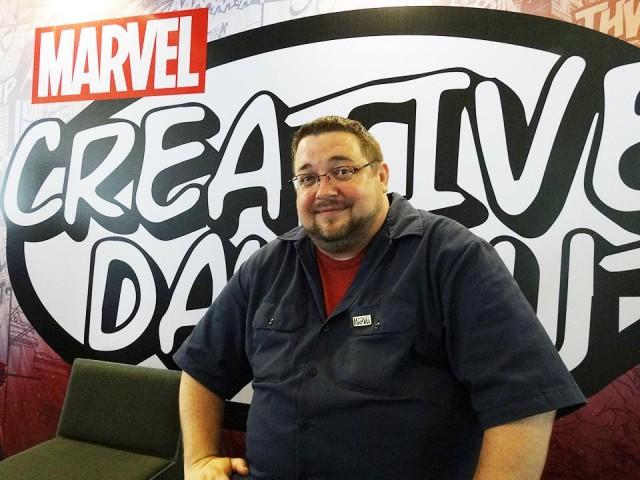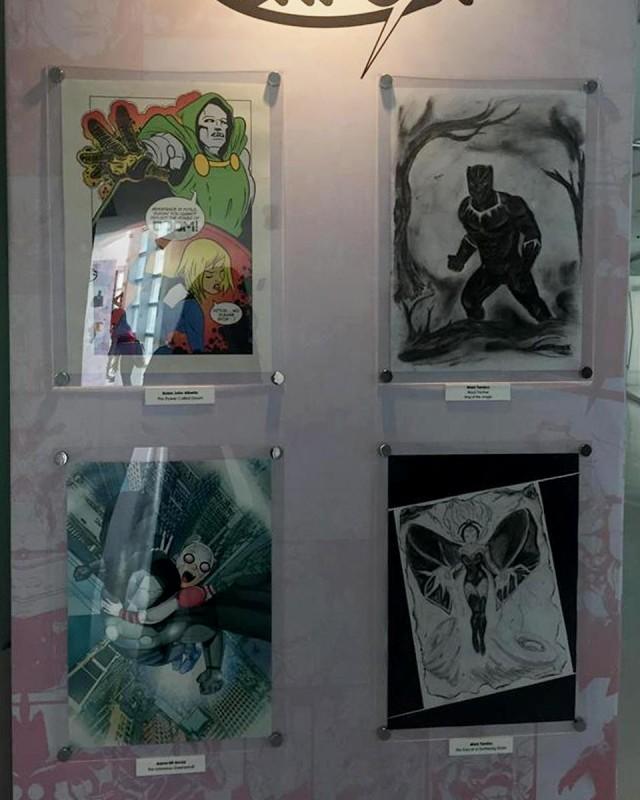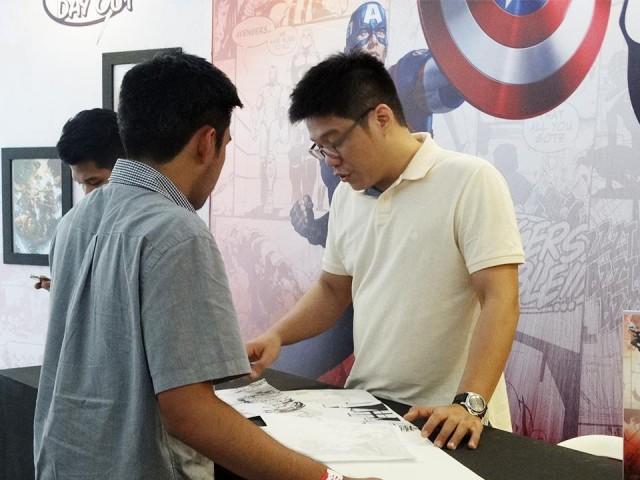9 really helpful tips from Marvel Comics Editor-in-Chief C.B. Cebulski on how aspiring artists and writers can join their team
It is the dream of every Marvel Comics fan to work on their favorite superheroes and with their creators.
In an exclusive one-on-one interview with GMA News Online at the Marvel Creative Day Out, Marvel Comics editor-in-chief C.B. Cebulski gave us tips on how you can join their growing team.

1. You can submit your folio through email. No need to relocate to New York
Marvel's corporate headquarters may be planted with the rest of the corporate giants in New York City, but Cebulski said you don't have to fly there to work as one of the comic artists of the Marvel team.
"No Marvel artist works in Marvel, we don't have any artist on staff, everyone is freelancers, everybody works at home or their apartment or they are a part of a larger studio or they rent an office and they go to work, so you don't have to go to New York," he said.
He mentioned that there are some of their artists whom they've never met, have only contacted through e-mail and have acquired the job by sending in their portfolios through e-mail.
"We don't know some of our artists, we've never met them in person, we've never looked at their studio, never seen them face to face, we met them in e-mail, they sent us their portfolio, the art speaks for itself, so the thing that you're gonna have to do is create a portfolio."
2. Remember: your artwork is your business card
Cebulski also said that your artwork itself will represent if you're worthy to land a job with Marvel.
"So more than that, you graduated, you got an art degree, you pick up a pencil you can draw, you're on your way, the way that you have to present to Marvel is really the art speaks for itself, you art is your calling card," he said.
3. Comic book artists, they're looking for storytellers
Cebulski said there are two different passes and instructions for artists and writers when it comes to their portfolios.
For comic book artists, Cebulski advises for them to send in at least six pages of comics with two sequences that show your capability as a storyteller taking the characters from panel to panel with the right flow.
"Don't just send some kind of sketches, or pinups or covers. What we're looking for are storytellers, we're looking for people who can actually draw interior pages of comics, so panel to panel, page to page...submit at least six pages of comic book artwork where it tells a story from the beginning, the middle and an end," he shared with GMA News Online.
For the first three-page sequence, he suggested you show how you illustrate and bring life and action to fight scenes between superheroes and villains.
"Do three-page sequence of an action scene, Spiderman, Wolverine or Captain America fighting a villain something big and badass, show how you do action, how you do scale, show them how you tell a dynamic story."
For the next sequence to complete your six pages of comics for your portfolio, bring out the human side of the superheroes through creating soft story scenes.
"Then the other would be a small fight scene because Marvel is much as about the human side as it is about anything else, so show a day scene, Peter parker, Mary jane talking to eachother."

4. Writers, don't pitch stories that use Marvel characters
Compared to artists, C.B. said it's a bit harder for writers because writing stories come along with "different legal points", and for the reason that everybody can have the same ideas for certain stories.
He said their team does not accept story pitches that use Marvel characters from new writers. Instead, they prefer reading works that does not involve Marvel.
"As a new writer, what you have to do is show us your own comics, previously printed comics from other publishers any kind of novels, any kind of web comics or digital comics. We wanna read your work as a writer, writing things that are not based on Marvel," he explained.
He said it's their way to see if the writer has the "story sensibilities and the pacing and the flare for words to bring to Marvel, so you need to show us your other work first and if we enjoy your other work then we'll ask you to pitch stories for Marvel."
5. Have a unique style
Cebulski said one of the most important things when it comes to illustrating comics as artists is developing your "unique style."
"There's a fine line between inspiration and imitation, so [yes] every artist looks to another artist to learn how to draw, but you can't copy any other artists. If you start by copying then that's how you learn, but then you have to create something original," he said.
He compared the creative process of comic artists with the chefs' procedure in cooking and inventing dishes.
"Just like a chef, you learn by cooking grand dishes and then you become a chef by creating your own menu. Comic artists are the same way, you look at other artists to learn how to draw, but then you have to develop your own style and create your own style."

6. Send in your works! Here's his email
You can actually send in your works and portfolios directly to C.B. since his email is always open for new talents, he said: ccebulski [at] marvel [dot] com. You can also tweet Marvel's talent manager Rickey Purdin .
"Any artist can send in any work at any time. All our editors are active on Twitter our talent manager Rickey Purdin actively looks for artists, people can e-mail him or tweet him their porfolio or links to their work, my e-mail inbox is always open as well, I'm always open for a new talent."
7. Make your subject line clear and concise
Says C.B., receives hundreds of emails daily, make sure yours don't get buried in the lot.
8. It doesn't end should you get into Marvel
In fact it's just the beginning. Just because it's a fun and cool job, doesn't mean that it does not require time and hard work. Drawing comics is a meticulous job that sometimes require longer hours than other regular desk jobs.
"People think that writing and drawing comics is not a job, but it is. It's hardwork, people would say oh I make comics, I draw Spiderman, I write the X-men, it's such an easy job I wish I could do that, it's not an easy job, it is a job. "
He added, "You have to have the work ethic to dedicate to Marvel or whatever company that you work for to be part of the creative circles."
9. Don't miss your deadlines
If there's one thing that annoys editors and EIC Cebulski himself about comic artists it's when they miss their deadlines!
"There's really nothing that annoys me as a comic book artist,I love working at Marvel, I love working with artists, I love working with talent. It was a joke at the beginning but I think the biggest complaint that any editor have with their artist is just that they miss their deadlines, so I guess that's a lesson to learn, 'artists, don't miss your deadlines'." — LA, GMA News





